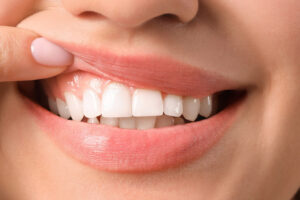The Dangers Of Bleachorexia That You Should Know

The Dangers Of Bleachorexia That You Should Know
Bleachorexia, also known as “bleachorexia” or “whitening obsession,” refers to the excessive and often harmful use of teeth whitening products. This term is used to describe individuals who engage in frequent or extreme teeth whitening practices in an attempt to achieve a perfect, bright smile. While a bright smile can boost confidence, overusing teeth whitening products can lead to serious health risks and dental problems. Here’s what you need to know about the dangers of bleachorexia and how to avoid them.
1. What is Bleachorexia?
Bleachorexia is characterized by an obsession with achieving an excessively white smile, often through the overuse of teeth whitening products. This can include whitening toothpastes, over-the-counter whitening strips, or professional whitening treatments. The condition is driven by a desire for a perfect smile, but it can result in significant damage to dental and oral health.
2. Health Risks of Excessive Teeth Whitening
2.1. Tooth Sensitivity
One of the most common side effects of frequent teeth whitening is increased tooth sensitivity. Whitening agents, especially those with high concentrations of hydrogen peroxide or carbamide peroxide, can penetrate the tooth enamel and irritate the nerves inside the teeth.
- Symptoms: Sharp or lingering pain when consuming hot, cold, or sweet foods and drinks. Sensitivity can be temporary but may become chronic with excessive use.
2.2. Enamel Erosion
Overuse of whitening products can lead to enamel erosion. Enamel is the protective outer layer of your teeth, and once it’s damaged, it cannot be restored.
- Consequences: Thinning enamel can make your teeth more susceptible to decay, discoloration, and damage. Enamel erosion can also exacerbate tooth sensitivity and lead to other dental issues.
2.3. Gum Irritation
Whitening agents can cause irritation and damage to the gums and soft tissues in the mouth. This is particularly true if the products come into contact with the gums or if they are used too frequently.
- Symptoms: Redness, swelling, and discomfort in the gums. In severe cases, chemical burns or ulcerations can occur.
2.4. Uneven Whitening
Excessive whitening can result in uneven whitening or “spotty” teeth. This occurs when some areas of the teeth become whiter than others, leading to an unnatural appearance.
- Causes: Uneven application of whitening products or the presence of dental restorations (such as crowns or fillings) that do not respond to whitening agents in the same way as natural teeth.
2.5. Damage to Dental Restorations
Teeth whitening products can affect the color and integrity of dental restorations, such as crowns, veneers, and fillings.
- Consequences: Restorations may become discolored or may not match the whiteness of natural teeth, leading to an uneven appearance and potential need for replacement.
3. Psychological and Social Implications
3.1. Body Image Issues
The obsession with achieving an excessively white smile can be a symptom of underlying body image issues. Individuals with bleachorexia may have unrealistic expectations about the appearance of their teeth and may experience dissatisfaction or anxiety about their smile.
3.2. Social Pressure
Media and societal standards often promote an idealized image of beauty, including perfectly white teeth. This can pressure individuals to pursue excessive whitening in an attempt to conform to these standards, leading to unhealthy practices.
4. Safe Practices for Teeth Whitening
To achieve a bright smile without compromising your dental health, consider the following tips:
4.1. Consult with a Dentist
Before starting any whitening treatment, consult with your dentist. They can assess your oral health, recommend safe and effective whitening options, and ensure that any treatment you choose is appropriate for your specific needs.
4.2. Follow Instructions
Always follow the instructions provided with teeth whitening products. Overuse or incorrect application can increase the risk of side effects.
4.3. Use Products Sparingly
Limit the use of whitening products to avoid overexposure. Professional whitening treatments should be spaced out according to your dentist’s recommendations.
4.4. Maintain Good Oral Hygiene
Brush and floss regularly to maintain oral health and prevent discoloration. Good oral hygiene can help you achieve and maintain a bright smile without the need for excessive whitening.
4.5. Avoid Whitening Products with High Concentrations
Choose whitening products with lower concentrations of hydrogen peroxide or carbamide peroxide, especially if you have sensitive teeth or existing dental issues.
4.6. Consider Alternative Solutions
If you’re concerned about the appearance of your teeth, explore other cosmetic options, such as dental veneers or bonding, which may provide a more natural and less damaging way to achieve a bright smile.
5. Recognizing and Addressing Obsessive Behavior
If you or someone you know is displaying obsessive behavior related to teeth whitening, it may be helpful to seek support from a mental health professional. Addressing underlying issues related to body image and self-esteem can help reduce the compulsion for excessive whitening and promote a healthier approach to dental care.
In summary, while achieving a bright smile is a common cosmetic goal, obsessively pursuing whiteness through excessive use of whitening products can lead to serious dental and health issues. By understanding the risks associated with bleachorexia and following safe whitening practices, you can protect your oral health and achieve a healthy, beautiful smile without compromising your well-being.







